-
 Bitcoin
Bitcoin $116400
-1.69% -
 Ethereum
Ethereum $3731
2.87% -
 XRP
XRP $3.119
-1.00% -
 Tether USDt
Tether USDt $1.000
-0.04% -
 BNB
BNB $774.0
1.01% -
 Solana
Solana $181.0
-2.25% -
 USDC
USDC $1.000
0.02% -
 Dogecoin
Dogecoin $0.2314
-2.16% -
 TRON
TRON $0.3145
1.76% -
 Cardano
Cardano $0.8087
0.22% -
 Hyperliquid
Hyperliquid $43.01
0.68% -
 Stellar
Stellar $0.4247
-0.93% -
 Sui
Sui $3.758
1.42% -
 Chainlink
Chainlink $18.30
1.99% -
 Bitcoin Cash
Bitcoin Cash $551.4
5.66% -
 Hedera
Hedera $0.2482
3.08% -
 Avalanche
Avalanche $23.70
0.18% -
 Litecoin
Litecoin $115.1
2.44% -
 UNUS SED LEO
UNUS SED LEO $8.972
-0.36% -
 Shiba Inu
Shiba Inu $0.00001370
0.73% -
 Toncoin
Toncoin $3.146
0.74% -
 Ethena USDe
Ethena USDe $1.001
-0.03% -
 Uniswap
Uniswap $10.49
3.95% -
 Polkadot
Polkadot $4.044
1.42% -
 Monero
Monero $328.9
2.43% -
 Dai
Dai $0.9998
-0.03% -
 Bitget Token
Bitget Token $4.510
-1.10% -
 Pepe
Pepe $0.00001231
-1.68% -
 Aave
Aave $293.4
2.16% -
 Cronos
Cronos $0.1294
2.89%
Volume breaking through the previous high and then shrinking the volume to step back to the 5-week line to add positions in the middle line
A volume breakout above resistance on strong volume signals bullish momentum, and a pullback to the 5-week MA with shrinking volume offers a strategic entry point.
Jul 24, 2025 at 07:56 am
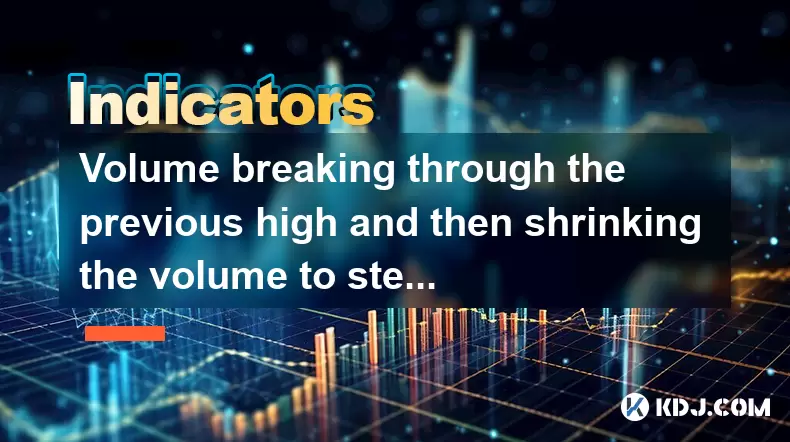
Understanding Volume Breakouts in Cryptocurrency Trading
In cryptocurrency trading, a volume breakout occurs when the trading volume spikes significantly as the price surpasses a prior resistance level. This phenomenon signals strong market interest and often indicates that a new trend may be forming. When the price breaks through a previous high on high volume, it suggests that buyers are overpowering sellers, which can be interpreted as a bullish signal. Traders closely monitor such breakouts because they can lead to sustained upward price movements. The key factor here is not just the price movement, but the accompanying volume, which validates the strength of the breakout. A breakout without substantial volume may be considered weak or potentially a false move.
It is essential to differentiate between a true breakout and a fakeout. A true breakout is confirmed when the volume is significantly higher than the average volume over the preceding days or weeks. For instance, if the average daily volume of a cryptocurrency like Bitcoin has been around 20,000 BTC, a breakout day with 40,000 BTC or more adds credibility to the move. Traders often use volume indicators such as the Volume Weighted Average Price (VWAP) or On-Balance Volume (OBV) to assess the sustainability of the breakout.
Interpreting Volume Contraction After a Breakout
After a strong breakout, it is common for volume to shrink as the price stabilizes or pulls back slightly. This contraction in volume is not necessarily a bearish signal. In fact, it can indicate that the market is digesting the recent move and that selling pressure is minimal. A healthy pullback on reduced volume suggests that the majority of weak hands have exited, leaving stronger holders in control. This phase is crucial for traders who are looking to add positions without chasing the price at its peak.
The shrinking volume during a pullback confirms that the upward momentum hasn’t been completely lost. If the price retreats but volume remains low, it implies that there is no aggressive selling. This environment creates an opportunity for traders to enter or increase their exposure at a better price point. The psychological aspect here is important: fear of missing out (FOMO) is lower, and decision-making becomes more rational.
Using the 5-Week Moving Average as a Strategic Entry Point
The 5-week moving average (MA) is a popular medium-term trend indicator used by crypto traders to identify potential support levels during pullbacks. When the price steps back to this moving average after a breakout, it often acts as dynamic support. Traders watch for the price to retest the 5-week MA with diminishing volume as a sign of consolidation before the next leg up.
To apply this strategy effectively:
- Plot the 5-week simple moving average (SMA) on your weekly chart.
- Wait for the price to break above a previous high on strong volume.
- Monitor the subsequent pullback to see if it reaches the 5-week SMA.
- Confirm that volume is decreasing during the pullback.
- Look for bullish candlestick patterns or reversal signals near the MA.
This method helps filter out noise and focuses on high-probability setups. The 5-week MA smooths out short-term volatility and reflects the sentiment over a significant period, making it a reliable reference point for intermediate-term traders.
Executing the Mid-Line Addition Strategy
Adding positions during the pullback to the 5-week line requires a disciplined approach. The goal is to increase exposure at a favorable risk-reward ratio without overcommitting capital. Here’s how to execute this step-by-step:
- Identify the initial breakout candle that surpasses the previous high with high volume.
- Confirm the breakout by checking that the next few candles do not close back below the resistance level.
- Watch for the price to begin retracing toward the 5-week MA.
- Ensure that volume declines during the retracement phase.
- Use additional confirmation tools such as RSI (Relative Strength Index) staying above 50 or a bullish engulfing pattern near the MA.
- Place a limit order slightly above the current price near the 5-week MA to avoid slippage.
- Set a stop-loss just below the 5-week MA to manage downside risk.
- Allocate only a portion of your total planned position size at this entry point.
This strategy allows traders to scale into a position rather than investing all capital at once. It reduces the risk of entering at the top of a short-term rally and improves the average entry price.
Monitoring Confirmation Signals and Risk Management
Even after entering a position, continuous monitoring is essential. The market may test the 5-week MA multiple times before resuming the uptrend. Traders should look for confirmation signals such as a strong bullish candle closing above the MA or a surge in volume indicating renewed buying interest. These signs increase the probability that the pullback was merely a healthy consolidation.
Risk management plays a vital role in this strategy. Since cryptocurrency markets are highly volatile, position sizing should be conservative. For example:
- Risk no more than 1–2% of your total trading capital on a single trade.
- Use a trailing stop once the price resumes its upward movement to lock in profits.
- Avoid adding to the position if volume spikes on the downside during the pullback, as this may indicate distribution.
- Keep an eye on broader market conditions, such as Bitcoin dominance or macroeconomic news, which can influence altcoin movements.
Proper execution of this strategy relies on patience and adherence to predefined rules. Emotional trading can lead to premature entries or exits, undermining the effectiveness of the approach.
Frequently Asked Questions
Q: How do I confirm that the volume during the breakout is strong enough?
A: Compare the breakout day’s volume to the average volume of the past 5 to 10 weeks. A volume that is at least 1.5 to 2 times higher than the average is generally considered strong. You can use a volume histogram on your charting platform to visualize this.
Q: Can this strategy be applied to daily charts instead of weekly ones?
A: Yes, the same principle applies to daily charts using the 5-day moving average. However, the signal may be noisier due to shorter timeframes. Ensure you adjust your risk management accordingly and use higher timeframes for trend confirmation.
Q: What if the price breaks below the 5-week MA after the pullback?
A: A close below the 5-week MA on increasing volume may indicate a failed breakout. In such cases, it’s advisable to exit the position or avoid adding, as the trend may be reversing.
Q: Is this strategy suitable for all cryptocurrencies?
A: It works best with high-liquidity assets like Bitcoin, Ethereum, or major altcoins with consistent trading volume. Low-cap or low-volume coins may exhibit erratic price movements and unreliable volume signals, making the strategy less effective.
Disclaimer:info@kdj.com
The information provided is not trading advice. kdj.com does not assume any responsibility for any investments made based on the information provided in this article. Cryptocurrencies are highly volatile and it is highly recommended that you invest with caution after thorough research!
If you believe that the content used on this website infringes your copyright, please contact us immediately (info@kdj.com) and we will delete it promptly.
- Pump, Bonk, Buyback: A Wild Ride in Crypto Town!
- 2025-07-25 19:10:12
- Punisher Coin, Dogecoin, Shiba Inu: Meme Coin Mania in the 2025 Crypto Landscape
- 2025-07-25 19:10:12
- Celestia's Token Control: Buyback & Staking Overhaul in Focus
- 2025-07-25 19:50:11
- Altcoins, Bitcoin, and Crypto Coins: What's Hot in the NYC Crypto Scene?
- 2025-07-25 19:55:52
- Litecoin Price Breakout Imminent? Rally Potential Explored!
- 2025-07-25 17:30:12
- Ether ETFs Surge, Bitcoin Wobbles: Is an ETH Breakout Imminent?
- 2025-07-25 16:50:12
Related knowledge

How to interpret that the KDJ D line is downward for a long time but the price is sideways?
Jul 25,2025 at 07:00pm
Understanding the KDJ Indicator and Its ComponentsThe KDJ indicator is a momentum oscillator widely used in cryptocurrency trading to assess overbough...

What does it mean that the KDJ indicator forms a double bottom at a low level?
Jul 25,2025 at 05:08pm
Understanding the KDJ Indicator in Cryptocurrency TradingThe KDJ indicator is a momentum oscillator widely used in cryptocurrency trading to identify ...
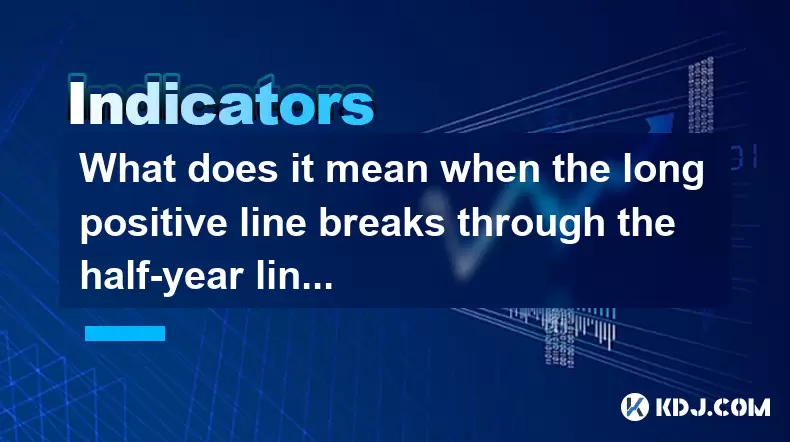
What does it mean when the long positive line breaks through the half-year line and then steps back?
Jul 25,2025 at 06:49pm
Understanding the Long Positive Line in Candlestick ChartsIn the world of cryptocurrency trading, candlestick patterns play a vital role in technical ...
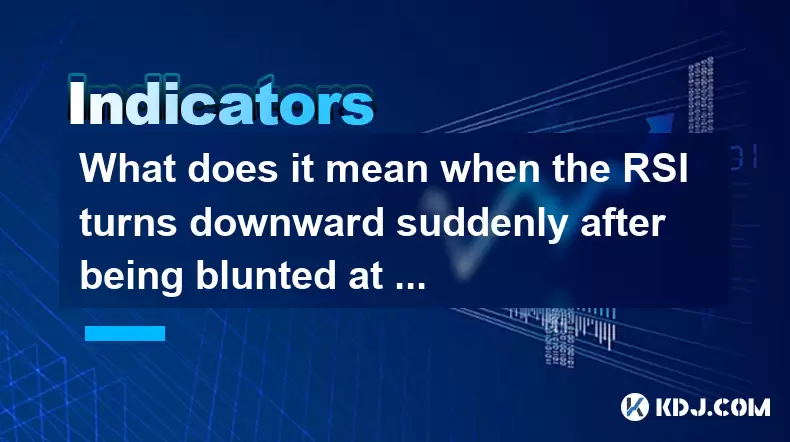
What does it mean when the RSI turns downward suddenly after being blunted at a high level?
Jul 25,2025 at 04:00pm
Understanding the RSI and Its Role in Technical AnalysisThe Relative Strength Index (RSI) is a momentum oscillator that measures the speed and change ...
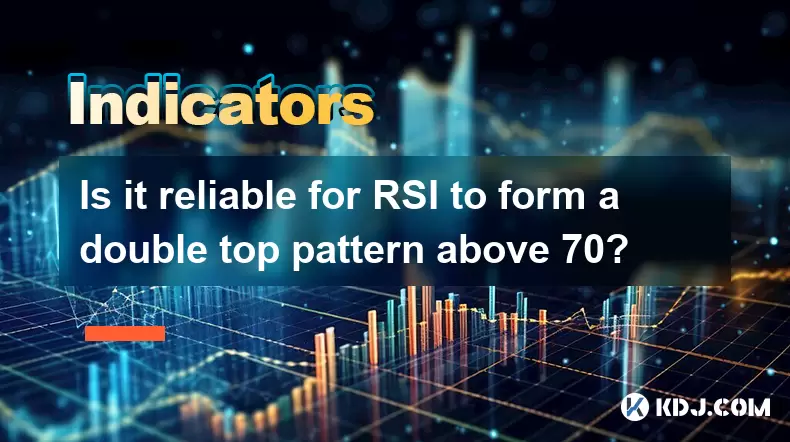
Is it reliable for RSI to form a double top pattern above 70?
Jul 25,2025 at 04:49pm
Understanding the RSI Indicator and Its Role in Technical AnalysisThe Relative Strength Index (RSI) is a momentum oscillator that measures the speed a...
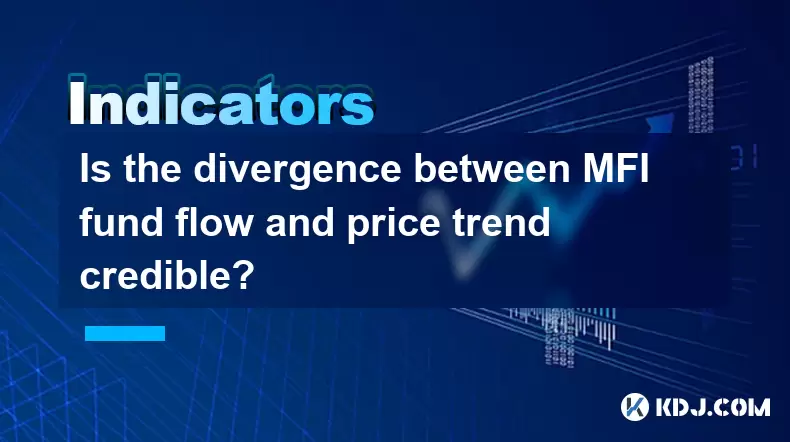
Is the divergence between MFI fund flow and price trend credible?
Jul 25,2025 at 12:01pm
Understanding MFI and Fund Flow in Cryptocurrency MarketsThe Money Flow Index (MFI) is a technical oscillator that combines price and volume to assess...

How to interpret that the KDJ D line is downward for a long time but the price is sideways?
Jul 25,2025 at 07:00pm
Understanding the KDJ Indicator and Its ComponentsThe KDJ indicator is a momentum oscillator widely used in cryptocurrency trading to assess overbough...

What does it mean that the KDJ indicator forms a double bottom at a low level?
Jul 25,2025 at 05:08pm
Understanding the KDJ Indicator in Cryptocurrency TradingThe KDJ indicator is a momentum oscillator widely used in cryptocurrency trading to identify ...

What does it mean when the long positive line breaks through the half-year line and then steps back?
Jul 25,2025 at 06:49pm
Understanding the Long Positive Line in Candlestick ChartsIn the world of cryptocurrency trading, candlestick patterns play a vital role in technical ...

What does it mean when the RSI turns downward suddenly after being blunted at a high level?
Jul 25,2025 at 04:00pm
Understanding the RSI and Its Role in Technical AnalysisThe Relative Strength Index (RSI) is a momentum oscillator that measures the speed and change ...

Is it reliable for RSI to form a double top pattern above 70?
Jul 25,2025 at 04:49pm
Understanding the RSI Indicator and Its Role in Technical AnalysisThe Relative Strength Index (RSI) is a momentum oscillator that measures the speed a...

Is the divergence between MFI fund flow and price trend credible?
Jul 25,2025 at 12:01pm
Understanding MFI and Fund Flow in Cryptocurrency MarketsThe Money Flow Index (MFI) is a technical oscillator that combines price and volume to assess...
See all articles

























































































